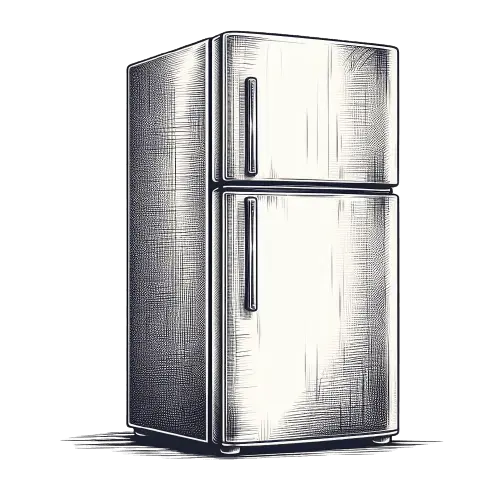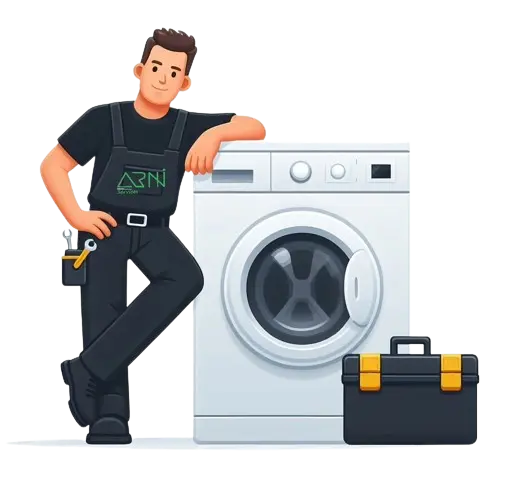Did you get a strange error code on your Samsung refrigerator? Just trying to reset it and make the code go away might not really fix the problem. The code could just pop up again later. So, what should you do? Start by figuring out what the error code on your Samsung fridge means. These codes are there to tell you something isn’t right.
If it’s tricky to understand these error codes, it’s a good idea to ask for help from someone who knows a lot about Samsung refrigerators. They can explain what the problem is and help fix your fridge properly. This way, you can make sure your fridge gets fixed right and keeps working well.


n the context of Samsung refrigerators, the error codes 1E, SE, or 5E typically indicate an issue with the refrigerator’s defrost function. Specifically, these codes are associated with a defrost timing or sensor problem. The “SE” or “1E” (often misread as SE) error code is commonly referred to as a defrost sensor error, while “5E” points to a defrost function error, such as a failure in the automatic defrosting system.
The 2E error code on a Samsung refrigerator indicates a problem with the freezer sensor. This error suggests that the sensor responsible for monitoring the temperature within the freezer compartment is not functioning correctly, leading to issues with maintaining the correct temperature.
The 3E error code on a Samsung refrigerator indicates an issue with the fridge’s fan motor or the motor sensor. This error suggests a malfunction related to the operation of the fan that circulates air within the refrigerator compartment, which is crucial for maintaining even and efficient cooling.
The 39E or 39C error code on a Samsung refrigerator is associated with an issue related to the ice maker function. Specifically, these codes typically indicate a problem with the ice maker’s cooling function or a malfunction within the ice maker system itself.
The 21E error code on a Samsung refrigerator indicates a problem with the freezer fan. This error signifies that the fan in the freezer compartment, responsible for circulating cold air to keep the freezer at the correct temperature, is experiencing a malfunction or blockage.
The 5E error code on a Samsung refrigerator typically indicates a problem with the defrost function. This code is more common in models where it reflects issues related to the defrost system, which prevents excessive frost buildup in the appliance.
The 8E error code on a Samsung refrigerator typically refers to an issue with the ice maker function, specifically pointing to the ice maker sensor or the ice maker mechanism itself. This code signals a malfunction in the system responsible for monitoring and controlling ice production
The 14E error code on a Samsung refrigerator is typically associated with an ice maker sensor issue. This code indicates a problem with the sensor responsible for detecting the ice bucket’s status, such as its temperature or fill level, which can affect the refrigerator’s ability to produce and dispense ice correctly.
The 33E error code on a Samsung refrigerator indicates an issue with the functionality of the ice pipe heater. This specific error code points to a malfunction related to the ice maker’s system, particularly the component designed to prevent the water supply line to the ice maker from freezing.
The “AP” error code, when displayed on a Samsung appliance, typically refers to an issue related to the Wi-Fi Access Point mode. This mode is often used for connecting the appliance to a Wi-Fi network for smart features and remote control functionalities. The “AP” indication might not be an error per se but rather a state or mode that the appliance is in, suggesting it is waiting to connect to a Wi-Fi network or is in a setup mode for such connection.
The 22E or 22C error code on a Samsung refrigerator indicates a problem with the refrigerator’s fan motor or a blockage in the fan system. This code is related to the airflow within the fridge, suggesting that the fan responsible for circulating cool air throughout the refrigerator compartment is experiencing difficulties.
The 40E, 40C, or 4C 2 error code on a Samsung refrigerator typically pertains to an issue with the water filter or the water supply to the refrigerator. These codes can indicate that the refrigerator is not detecting water flow through the filter correctly, possibly due to installation issues, a clogged filter, or problems with the water supply line.

The 84C error code on a Samsung appliance typically indicates an overheating issue. This code is most commonly associated with Samsung ovens and ranges, signaling that the appliance has detected temperatures inside it that are higher than normal operational levels. The specific cause of this error can vary, but it generally points to a malfunction that is causing the appliance to overheat.
Error code 41E or 41C on a Samsung appliance typically indicates a problem related to the ice maker function. This error is most commonly seen in Samsung refrigerators and signifies an issue within the ice maker system that prevents it from operating correctly. The error can be triggered by various factors, from mechanical faults to electronic issues.
The Samsung refrigerator error code “OF OF” or “O FF” indicates that the fridge is in Cooling Off Mode (also known as Demo Mode or Shop Mode). This mode is typically used in retail stores to save energy when the refrigerator is on display, as it turns off the cooling system while keeping the lights and electronics operational.

We come to you, view all service location areas
The Samsung refrigerator error code “PC ER” or “PC CH” indicates a Communication Error between the refrigerator’s main control board and the display panel. This error suggests that the two components are not successfully communicating, which can impact the functionality and operation settings of the refrigerator.
The Samsung refrigerator error code “85C,” particularly noted on Family Hub models, is indicative of low voltage detected at the power source. This situation is often the result of a brief power outage and is generally considered harmless.
The error codes “88 88, 83E, 85E, or 86E” on Samsung refrigerators indicate a voltage or power error, suggesting that the refrigerator is experiencing issues with its electrical supply or internal electrical components. These errors can affect the appliance’s performance, potentially leading to cooling problems or operational interruptions.
The Samsung refrigerator error code “76C” or a blinking Autofill indicator typically signals an issue with the Autofill water pitcher feature, which is designed to automatically refill with water. This error suggests that the refrigerator’s internal systems are encountering difficulties with the Autofill function, potentially impacting the efficient operation of the water dispensing mechanism.
The Samsung refrigerator error codes “41 or 42” accompanied by interior blue lights flashing indicate issues related to the appliance’s internal temperature sensors or cooling system. These specific codes and symptoms often point to a malfunction that prevents the refrigerator from maintaining the set temperature, potentially affecting its cooling performance.
The Samsung refrigerator error codes “4E” or “4C” generally indicate a water supply issue, specifically related to the refrigerator’s water dispensing and ice-making functions. These codes alert you that the refrigerator is having trouble accessing the water it needs for ice production or water dispensing.
When you need to fix or check your Samsung fridge for errors, always unplug it first. This keeps you safe from electric shocks. Be careful with the fridge’s electronic parts and things that move. If fixing it seems hard or the problem doesn’t go away, it’s smart to call a pro. They can figure out the problem and fix it right.
Keep your fridge clean and make sure air can move around it well. This stops many common fridge problems.
If you see error codes or something that seems off, act fast to stop your food from going bad and to keep your fridge working well. Often, you’ll need a pro to really solve the problem.